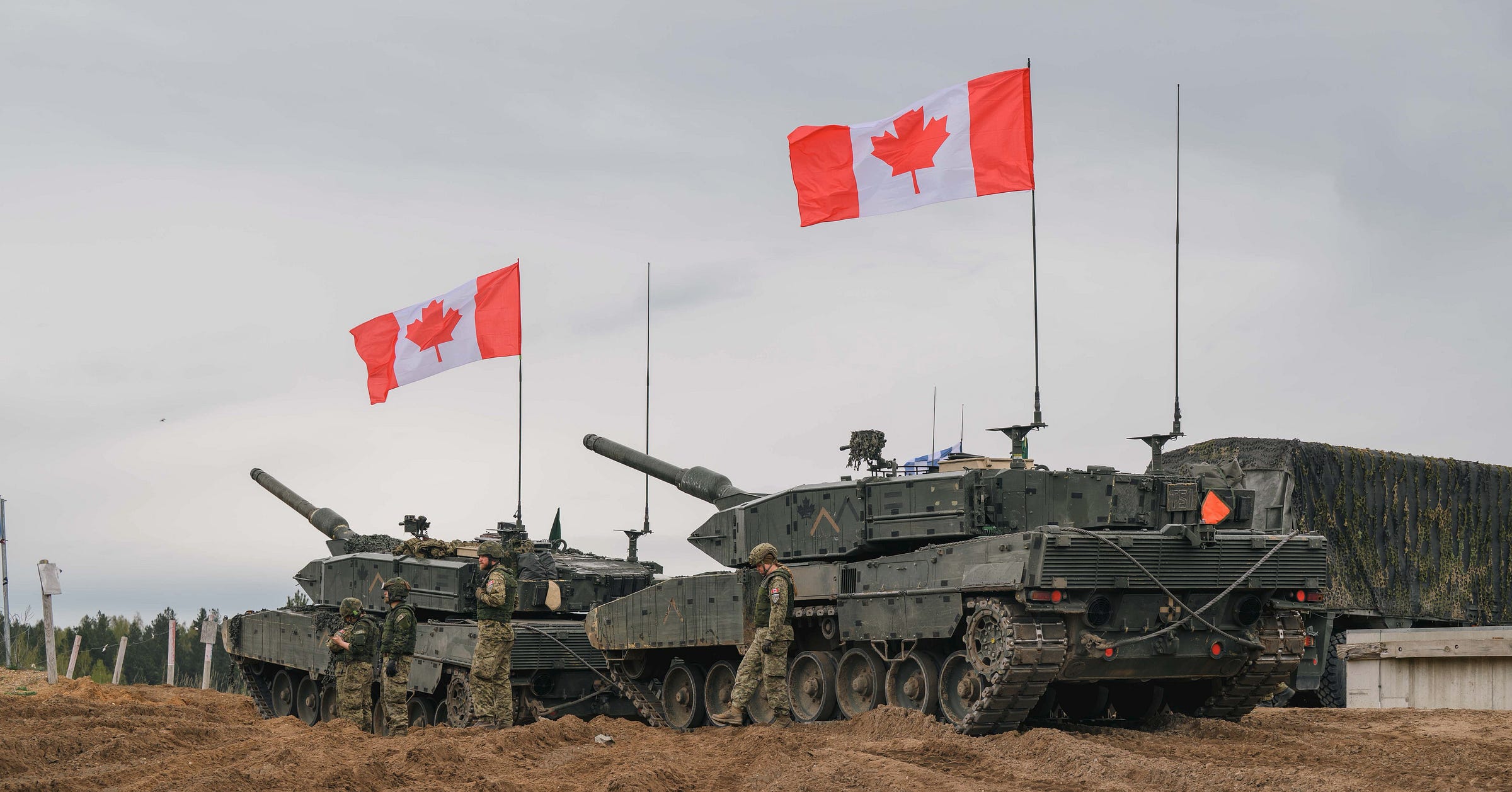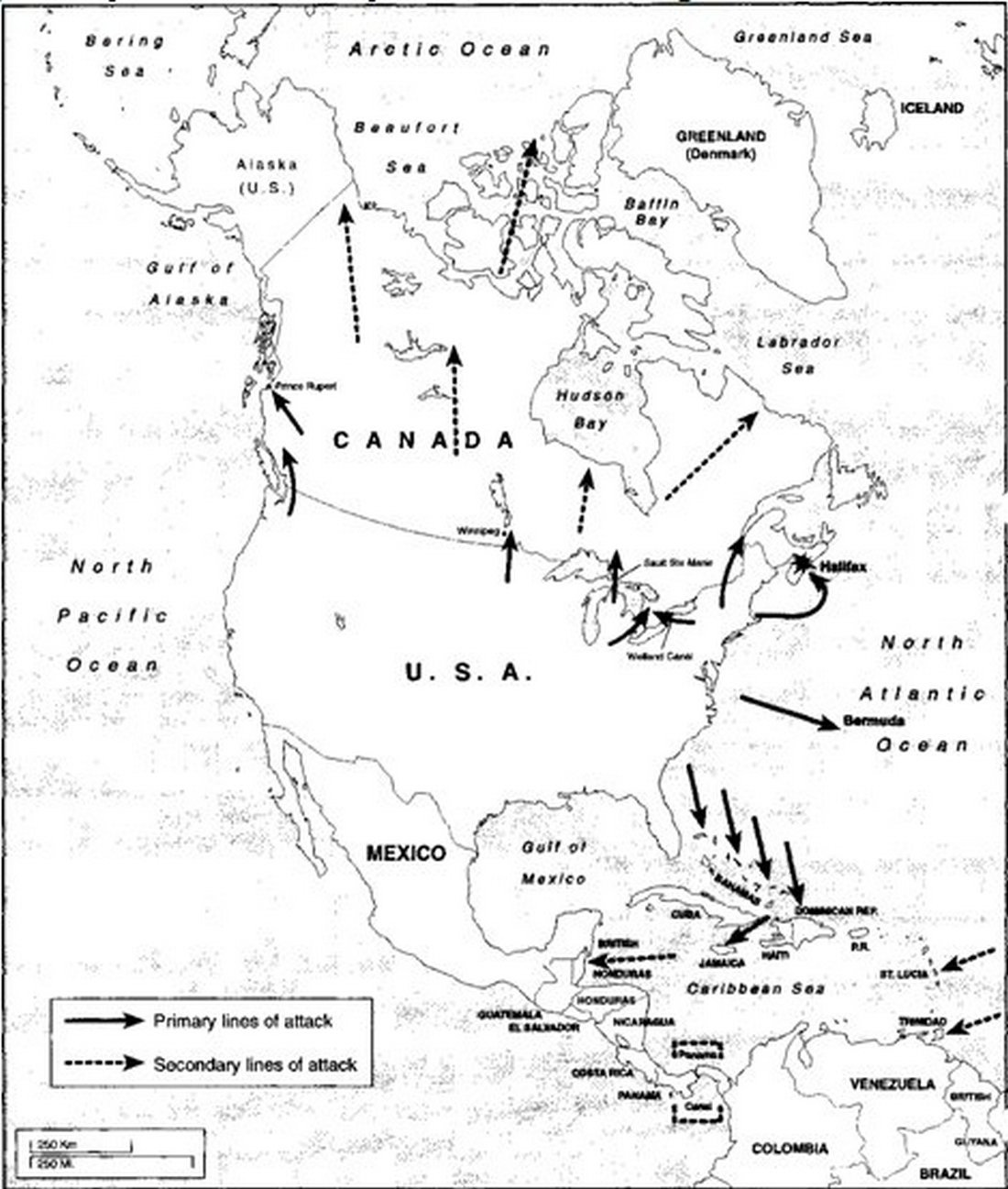In a War With Canada, America Would Win at First ... And Then Lose
Imagine occupying the second-biggest country in the world
U.S. Pres. Donald Trump has floated the idea, absurd on its face, of a U.S. invasion of Canada that would turn the country into a gigantic 51st U.S. state.
Maybe Trump isn’t serious. But Canadians aren’t taking any chances. Trump’s threats were the decisive factory in the Liberal Party of Canada’s electoral victory in April. The LPC had positioned itself as pro-independence … and anti-Trump.
Trump isn’t the first American leader to mull war with Canada, however. U.S. troops tried and failed to invade Canada in 1775 and 1812 during American wars with Great Britain. America’s plan for an attack on Canada in the 1920s and ’30s was likewise a supporting effort in an anticipated clash with Britain.
U.S. planners assumed they’d have to eliminate the threat of a British march into the United States from Canada … by marching the U.S. Army into Canada.
A century later, a war between the United States and Canada would surely play out differently—although not radically so. Today as in 1920, the USA is much more powerful than Canada is. But present-day Canada is as enormous—and as rugged in places—as it was 100 years ago: a daunting problem for any occupying force.
U.S. economic and naval expansion in the aftermath of World War I was the main driver of conflict between the United States and the United Kingdom through the 1930s.
“The most probable cause of war between Red [the United Kingdom] and Blue [the United States] is the constantly increasing Blue economic penetration and commercial expansion into regions formerly dominated by Red trade, to such extent as eventually to menace Red standards of living and to threaten economic ruin,” War Plan Red warned.
The main objective of the U.S. war plan was to capture of the port of Halifax in Nova Scotia, 600 miles northeast of New York City. American planners assumed any British intervention would require Halifax as a base of operations.
The British intervention would also require the Royal Navy to contest, if not control, the eastern Atlantic Ocean off the U.S. East Coast.
War Plan Red called for 25,000 U.S. troops to assemble in Boston within three days of the initial U.S. mobilization—and then sail for Halifax under U.S. Navy escort. Today, the U.S. Marine Corps would probably provide the assault force.
A second U.S. force would gather in upstate New York for a thrust into Montreal and Quebec. A third American grouping of troops would mass in Buffalo and then march west from the Niagara River, seizing hydroelectric plants and canals. The American garrison in Detroit would launch small attacks into Canada in order to create a buffer zone around the key industries of southeastern Michigan.
A fifth U.S. corps would march Blue column would move north from Sault Ste. Marie, in Michigan’s Upper Peninsula, shielding the highly strategic Sault Ste. Marie canal and its immense locks from British and allied sabotage.
The sixth American grouping would target the rail hub in Winnipeg, 60 miles north of Minnesota. The seventh would attack north from Washington State in order to control Canada’s Pacific ports.
From these axis, U.S. troops would aim to extend American control across all of Canada. War Plan Red specifically authorized U.S. forces to use chemical weapons.
In 1921, Canadian strategist Lt. Col. James “Buster” Sutherland Brown drafted plans for Canadian troops to preemptively strike the United States—and then swiftly retreat back to Canada. Brown hoped the attack would tie up U.S. forces long enough for British troops to sail to Canada’s aid.
March on Spokane
At the first sign of American mobilization, Canadian forces would march on Spokane, Seattle, Portland, Fargo, portions of the Great Lakes region and Albany. As soon as they encountered significant U.S. forces, the Canadians would turn around and go home—blowing up bridges and factories as they withdrew.
As part of their research, Buster and his team dressed as civilians and traveled across the United States. Buster’s contempt for the Americans was obvious in his notes. “While we stopped here near North Duxbury, a man employed on the state roads in repair patrol came up,” he wrote. “He was characteristic of a large number of men of the state—fat and lazy but pleasant and congenial.”
Americans may have been “fat and lazy,” but they greatly outnumbered Canadians—and still do. Today, the entire Canadian army, active and reserve, numbers just 50,000 troops riding in fewer than 100 tanks and another 1,000 armored vehicles. Between them, the U.S. Army and Marine Corps, active and reserve, can deploy more than 1 million troops riding in 2,600 tanks and tens of thousands of other armored vehicles.
The gap between U.S. and Canadian artillery, air, space and naval power is even greater.
The British Army, Royal Air Force and Royal Navy were dominant in the 1920s and ’30s. It should go without saying they’re no longer dominant. Maybe NATO would come to Canada’s defense in the event Trump ordered the U.S. military to take Canada. But don’t forget: the United States provides the bulk of NATO’s capabilities for long-range deployments by air and sea.
There’s no doubt the Americans could defeat the Canadians and their allies in a direct clash. But in his own writing about War Plan Red, historian and political scientist Robert Farley raised the specter of “resistance forces in the Canadian wilderness” and “guerrilla operations in the far north.”
America’s ultimate defeat in Afghanistan looms over any discussion, however far-fetched, of a U.S. occupation of Canada, the world’s second-largest country by area.
A U.S. invasion of Canada would be as foolish, and ultimately doomed, as it is absurd.
Read more:





Great piece! We are now entering a 19th century style competition between great powers, without the guardrails developed after the two world wars. Territorial conquest is now back in vogue, unpunished, unsanctioned. Might makes right again. Canada, with vast natural resources spread over a large and largely unprotected territory in the north, is a juicy target for the US, just like Greenland.
Canada stands no chance of defeating the US conventionally, so the country can't deter a land grab with its armed forces. What the country can do however, is train
its population for guerilla warfare with a Territorial Reserve, composed of citizens who would be promised no foreign deployment and no mobilization for natural disaster assistance. This would ensure more recruits. The bet is that the mere existence of this Territorial Reserve would make the prospect of occupation prohibitive.